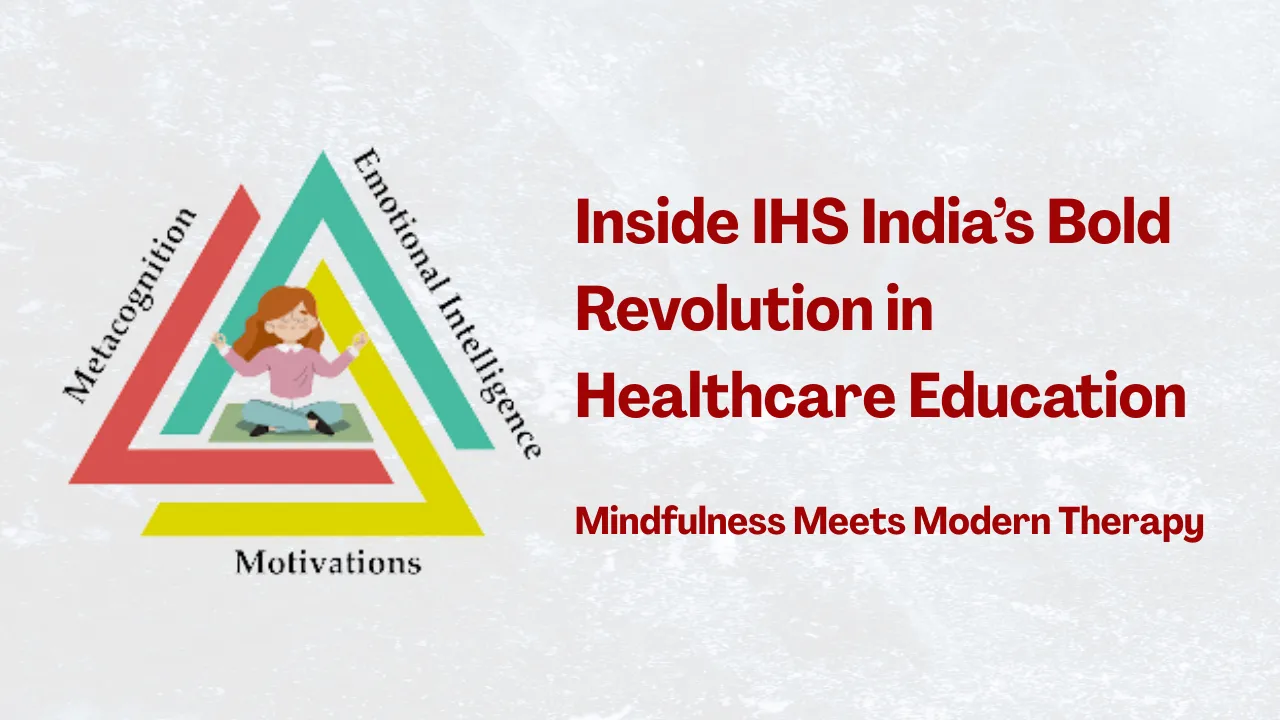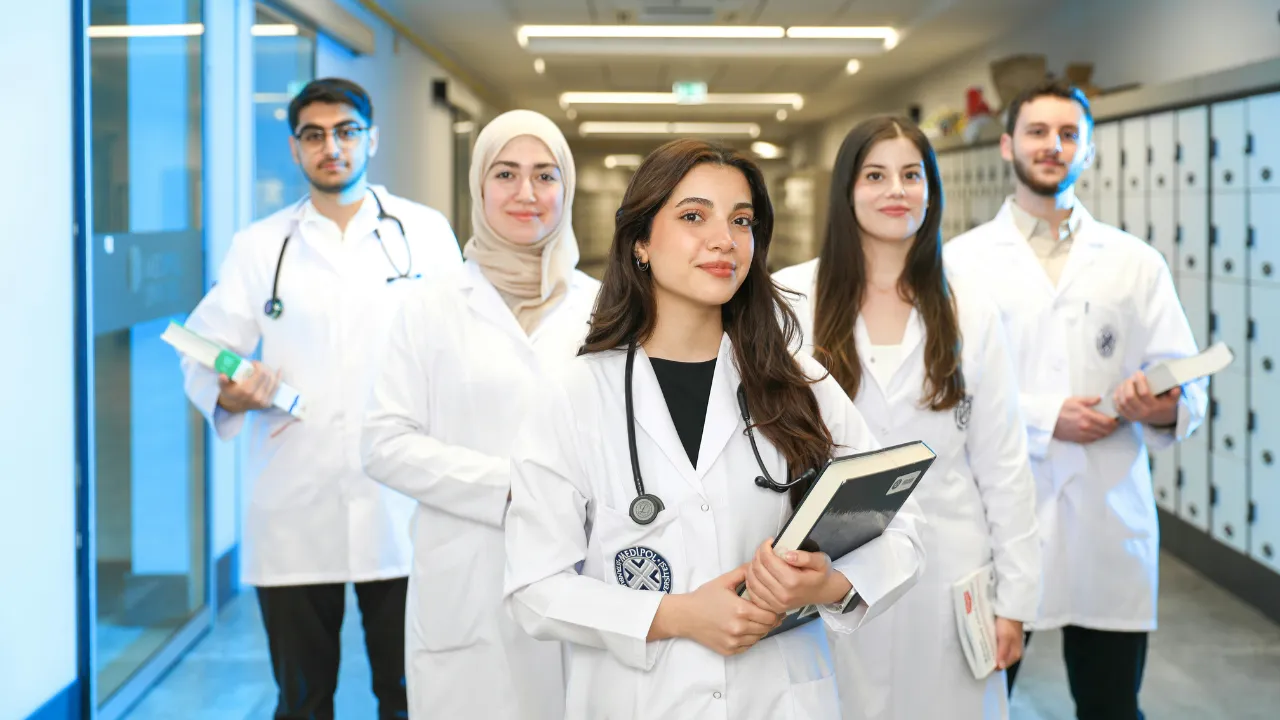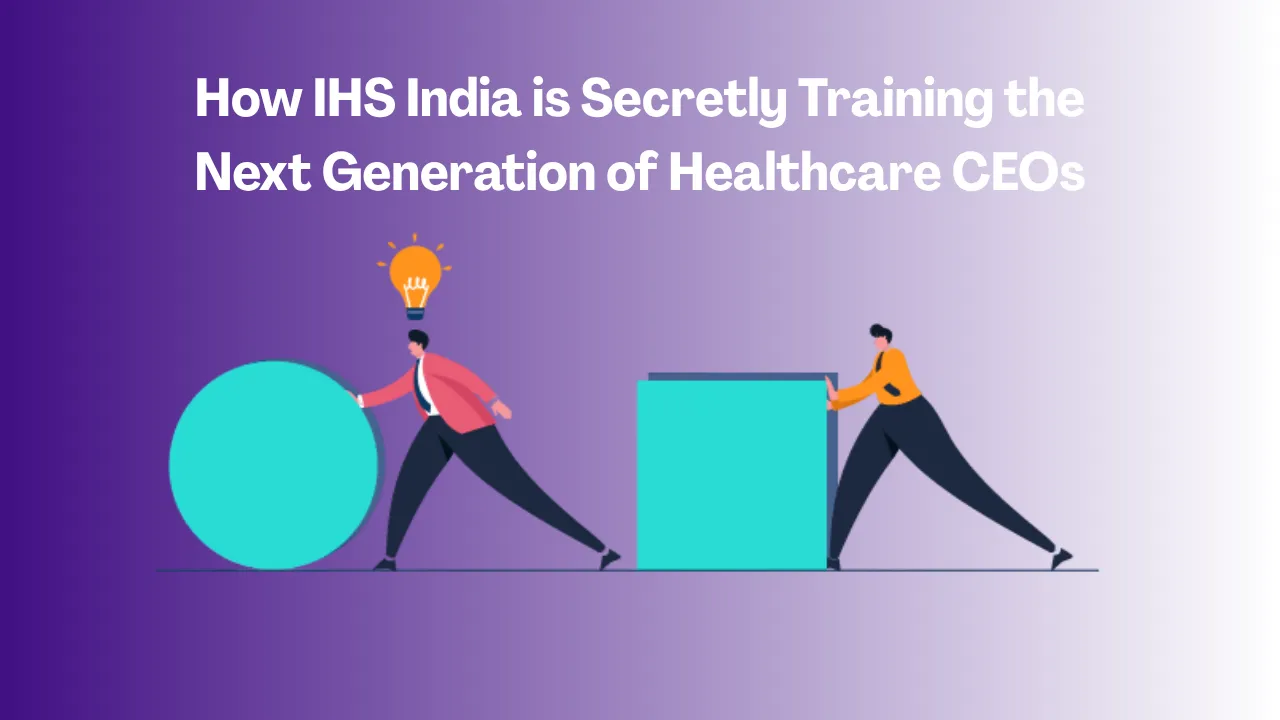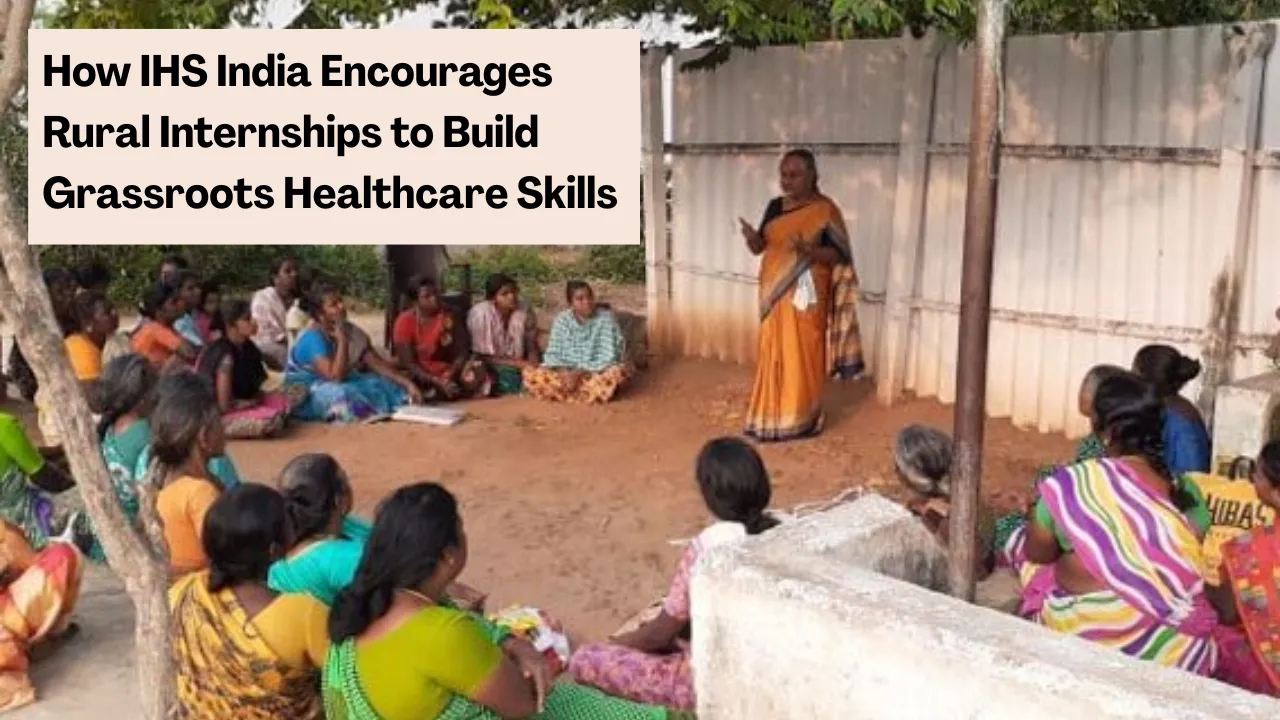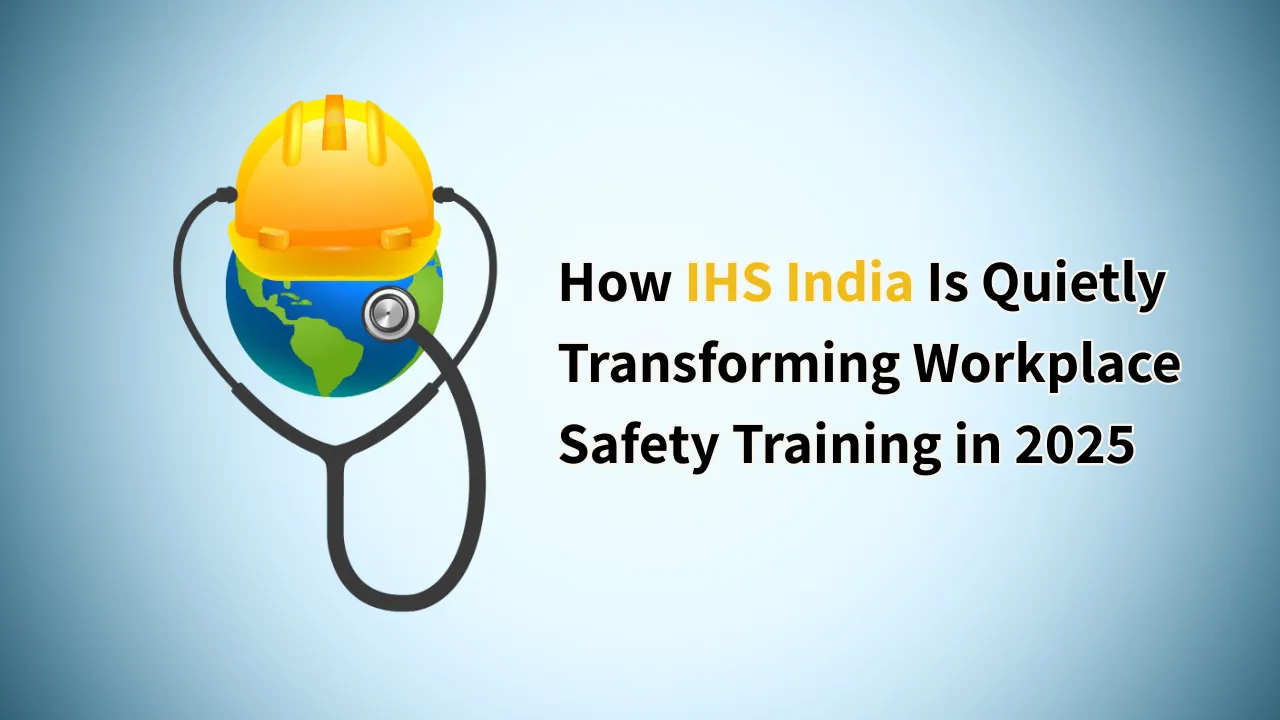Integrating Mindfulness in Healthcare Education: The landscape of healthcare education is rapidly evolving, and it’s no longer enough for future clinicians to master anatomy or diagnostic protocols alone. Today’s healthcare demands emotional intelligence, self-awareness, and the ability to connect with patients on a deeper level. One institution leading this charge is IHS India (Institute of Health Sciences), which has made a remarkable shift in how it trains its students.
By integrating mindfulness in healthcare education, IHS India is doing more than just preparing professionals—it’s cultivating compassionate, grounded practitioners who understand the value of presence in patient care. Mindfulness is not taught here as an add-on; it’s an integral part of the academic and clinical journey.
Integrating Mindfulness in Healthcare Education
IHS India’s approach to integrating mindfulness in healthcare education is multi-dimensional. The institute embeds mindfulness practices into classroom instruction, clinical training, and professional development. From first-year students to senior faculty, everyone is involved in learning how to use awareness-based techniques to improve therapeutic outcomes and manage professional stress.
Mindfulness helps healthcare students build emotional resilience, focus, and empathy—traits essential in physiotherapy, speech-language pathology, occupational therapy, rehabilitation, and clinical psychology. The program teaches them to be present in their interactions, regulate their own emotional states, and use these tools to support patient recovery, particularly in high-stress or chronic illness contexts.
Overview Table: IHS India’s Mindfulness Model in Healthcare Training
| Aspect | Details |
| Program Scope | Cross-disciplinary (PT, OT, SLT, Psych, Rehab) |
| Key Techniques Taught | Breathwork, body scans, mindful listening, reflection exercises |
| Implementation Strategy | Curriculum integration, clinical simulations, daily guided practices |
| Start Point | Semester 1 of all healthcare programs |
| Faculty Role | Trainers, researchers, and mindfulness mentors |
| Benefits for Students | Reduced burnout, better patient interaction, improved focus |
| Applications in Therapy | Pain management, neuro rehab, pediatric therapy, mental health counselling |
How Students Are Trained to Incorporate Mindfulness Techniques in Therapeutic Practice
At IHS India, mindfulness is not confined to a single course or semester. It’s part of a structured, longitudinal learning model that starts on day one. Students are not just told about mindfulness—they are taught to live it, feel it, and most importantly, use it in therapy.
Here’s how that training unfolds:
1. Mindfulness as Daily Practice
Every healthcare student at IHS India begins their day with short, guided sessions focused on breath awareness or body scanning. This isn’t spiritual or philosophical—it’s neurocognitive training. Regular practice helps students enhance their attention span, reduce academic stress, and improve emotional regulation, especially during demanding clinical sessions.
2. Experiential Learning and Reflection
Mindfulness is woven into clinical role-plays, case studies, and peer interactions. After a simulated therapy session, students reflect on how they responded to emotional cues, how present they felt during the interaction, and whether they were able to listen mindfully. These reflections are often recorded in mindfulness journals, which are reviewed by mentors.
3. Incorporation into Clinical Techniques
Whether working with a patient recovering from a stroke or helping a child with speech delay, students are trained to include simple mindfulness techniques in their therapy plans:
- Teaching breath-focused exercises for clients with anxiety or chronic pain
- Using guided visualisation for post-stroke patients to reconnect with body awareness
- Encouraging pause and reflection in cognitive rehabilitation sessions
- Supporting acceptance-based approaches in mental health and behavioral therapy
These practices are not generic—they’re adapted to the needs of specific populations, making mindfulness an active part of patient-centered care.
4. Mindful Communication Training
Students learn how to be truly present with their clients. This includes:
- Making eye contact with purpose
- Listening without mentally preparing responses
- Using silence as a therapeutic tool
- Being aware of tone, posture, and non-verbal cues
By practicing mindful communication, future therapists build stronger rapport and encourage trust—especially in emotionally sensitive cases like grief counselling, pediatric disability, or trauma rehabilitation.
Faculty Engagement and Role Modeling
Faculty members at IHS India are not just instructors; they’re mindfulness practitioners themselves. Many have undergone certified mindfulness-based stress reduction (MBSR) training and lead weekly sessions for students and staff. The idea is simple: students must see mindfulness in action to replicate it.
Faculty also:
- Run mindfulness-based support groups for clinical interns
- Integrate conscious pause techniques during lectures and assessments
- Conduct research projects on the efficacy of mindfulness in rehabilitation outcomes
This level of faculty involvement ensures that mindfulness isn’t just a classroom concept—it’s a visible part of the institution’s learning environment.
Real-Life Application in Patient Care
Students at IHS India are encouraged to test mindfulness techniques in supervised clinical postings. Many report transformative experiences:
- A physiotherapy intern used guided breathwork with a chronic pain patient and noticed improved adherence to exercise routines
- A speech-language student taught rhythmic breathing to a child with stuttering, helping reduce performance anxiety
- A rehab psychology trainee implemented mindfulness sessions in group therapy for anxiety management
These aren’t just textbook examples—they’re daily realities where mindfulness empowers both the therapist and the client.
Why IHS India’s Model Stands Out
What sets IHS India apart is how deeply mindfulness is integrated into their healthcare education ecosystem. It’s not offered as an optional workshop or an end-of-semester relaxation class. Instead, it’s seen as:
- A tool for clinical excellence
- A skill for mental wellness
- A method for building empathy
- A means to enhance patient outcomes
Few healthcare institutes in India offer this level of depth in soft-skill and emotional regulation training, especially across so many therapy disciplines.
Conclusion
Integrating mindfulness in healthcare education isn’t just a progressive teaching strategy—it’s a necessity for the future of patient care. IHS India’s model proves that when students are trained to be mindful practitioners, they become more than just professionals—they become healers. By blending science, empathy, and self-awareness, the institute is raising a new generation of healthcare providers who are resilient, present, and deeply attuned to their patients’ needs.
In a world where burnout is rising and compassion is fading, IHS India’s approach is not just relevant—it’s revolutionary.
FAQs
1. How early is mindfulness introduced to students at IHS India?
From the first semester, students begin daily mindfulness practices as part of their regular academic schedule.
2. What kind of mindfulness techniques are taught?
Techniques include breath awareness, body scanning, mindful listening, guided imagery, and emotion regulation strategies tailored for healthcare settings.
3. Is mindfulness used in patient treatment as well?
Yes. Students are trained to include mindfulness in therapy plans, especially in cases involving pain management, stress disorders, neuro-rehab, and behavioral therapy.
4. Do faculty members practice mindfulness too?
Absolutely. Faculty lead weekly sessions, supervise reflective journaling, and model mindful behavior in classroom and clinical settings.
5. Is this mindfulness approach limited to psychology students?
Not at all. It spans across physiotherapy, speech therapy, occupational therapy, and rehabilitation sciences—making it a core part of all healthcare training programs.
